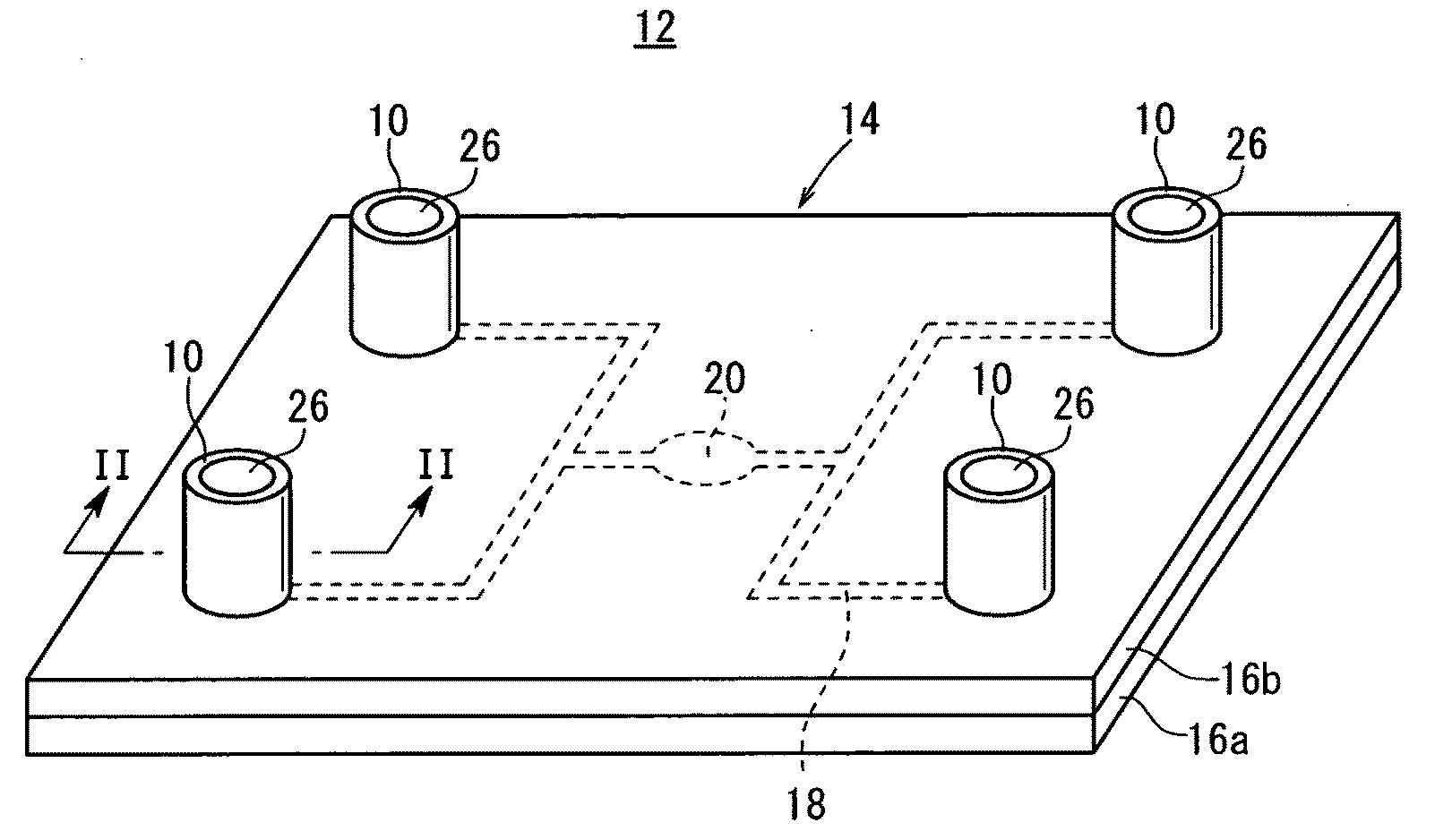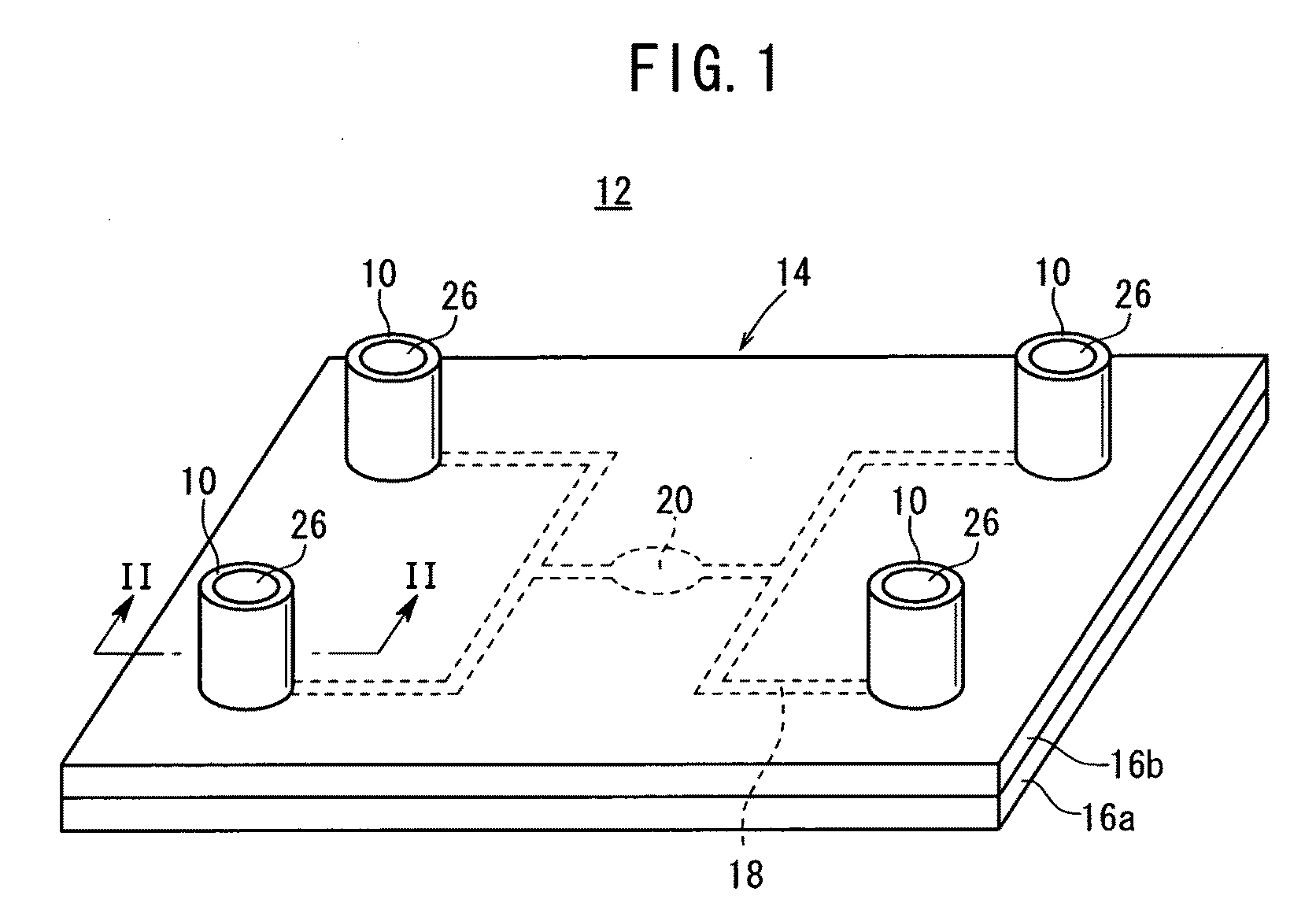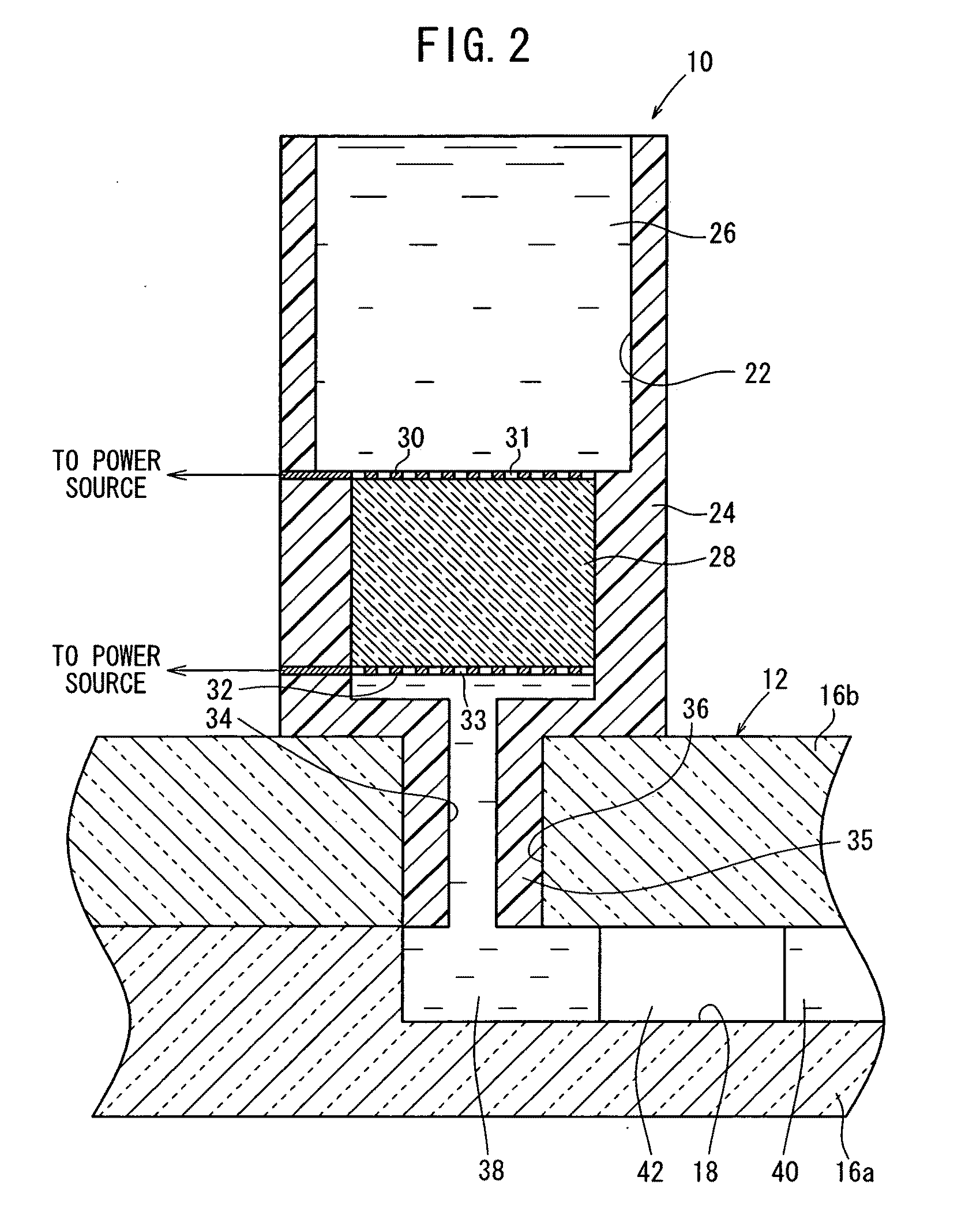Electroosmotic material, method for production of the material, and electroosmotic flow pump
a technology of electroosmotic flow pump and electroosmotic material, which is applied in the direction of electrodialysis, machines/engines, textiles and paper, etc., can solve the disadvantages of poor pressure resistance and long-term durability, insufficient strength of electroosmotic material, and inability to easily be assembled. , to achieve the effect of improving flow rate and pressure, good pressure characteristic, and high flow ra
- Summary
- Abstract
- Description
- Claims
- Application Information
AI Technical Summary
Benefits of technology
Problems solved by technology
Method used
Image
Examples
example 1
[0178]Powders of a fused quartz (transparent) or a fused silicic acid (opaque) having purity of 99% or more were selected as starting material SiO2 powders. The powders had average particle diameters of less than 0.2 μm, 0.2 to 0.7 μm, 0.7 to 1.5 μm, 1.5 to 3.0 μm, 3.0 to 7.0 μm, and more than 7.5 μm, respectively.
[0179]Meanwhile, additive powders of BaCO3 (a BaO component source), SrCO3 (an SrO component source), CaCO3 (a CaO component source), TiO2, ZrO2, Na2O, and K2O, having purity of 99% or more, were prepared respectively. Each additive powder had an average particle diameter of 0.05 to 2.5 μm.
[0180]The SiO2 powder and the additive powder were ball-mill-mixed for 12 hours in a 300-cc urethane-lined pot mill using a solvent of pure water or methanol and high-purity ZrO2 balls having diameters of 5 to 12 mm. Then, the mixed powder was dried at 120° C.
[0181]The dried powder was milled in an alumina mortar, placed in a high-purity alumina crucible, and calcined at 750° C. to 1250°...
example 2
[0193]Powders of an alkali feldspar (Na2O·Al2O3.6SiO2), a kaolinite (Al2O3.2SiO2.2H2O), and a petalite (Li2O.Al2O3.8SiO2), each having an average particle diameter of 0.1 to 4.0 μm, were selected as natural mineral powders.
[0194]Meanwhile, solid solution compounds of BaSiO3, BaTiO3, BaZrO3, and SrSiO3 were obtained from powders of BaCO3, TiO2, SiO2, ZrO2, and SrCO3 each having a purity of 99% or more and an average particle diameter of 0.05 to 2.5 μm.
[0195]A commercially available SiC was prepared.
[0196]Second porous sintered bodies were produced in the same manner as above except for using the alkali feldspar, kaolinite, petalite, BaSiO3, BaTiO3, BaZrO3, SrSiO3, and SiC as additive powders. For comparison, a porous sintered body was produced using a mixed powder containing the additive powder in an amount of more than 10 parts by weight. The porous sintered bodies were subjected to the measurement of porosity, pore diameter, mechanical strength, crystal state, and electroosmotic fu...
example 3
[0199]Six powders of a fused alumina (α-Corundum) having purity of 99% or more were selected as starting material Al2O3 powders. The powders had average particle diameters of less than 0.3 μm, 0.3 to 1.5 μm, 1.5 to 5.0 μm, 5.0 to 8.0 μm, 8.0 to 10.0 μm, and more than 10.0 μm, respectively.
[0200]The starting material Al2O3 powder was mixed with the above starting material SiO2 powder at a predetermined ratio. Further, the above powder of BaCO3, SrCO3, CaCO3, TiO2, ZrO2, Na2O, or K2O was added to the SiO2—Al2O3 powder, to obtain a mixed powder.
[0201]Then, third porous sintered bodies were produced in the same manner as above. For comparison, a porous sintered body was produced using a mixed powder containing the additive powder in an amount of more than 10 parts by weight. The porous sintered bodies were subjected to the measurement of porosity, pore diameter, mechanical strength, crystal state, and electroosmotic function indexes (the normalized flow rate coefficient, normalized pres...
PUM
| Property | Measurement | Unit |
|---|---|---|
| Temperature | aaaaa | aaaaa |
| Temperature | aaaaa | aaaaa |
| Temperature | aaaaa | aaaaa |
Abstract
Description
Claims
Application Information
 Login to View More
Login to View More - R&D
- Intellectual Property
- Life Sciences
- Materials
- Tech Scout
- Unparalleled Data Quality
- Higher Quality Content
- 60% Fewer Hallucinations
Browse by: Latest US Patents, China's latest patents, Technical Efficacy Thesaurus, Application Domain, Technology Topic, Popular Technical Reports.
© 2025 PatSnap. All rights reserved.Legal|Privacy policy|Modern Slavery Act Transparency Statement|Sitemap|About US| Contact US: help@patsnap.com



